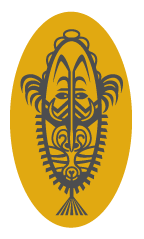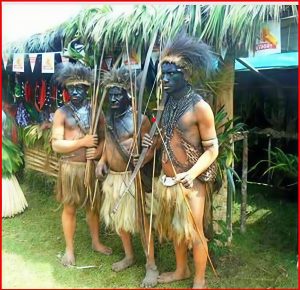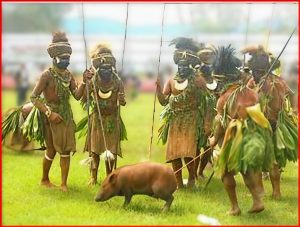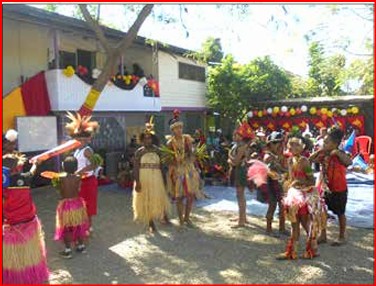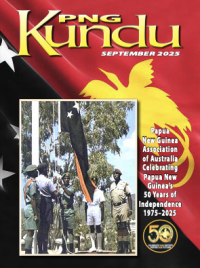Discovering PNG’s Cultural Diversity Along the Way to School
I was born a kanaka at Kondo village in Kandep, Enga Province, sometime in the mid-1950s. As a small boy, when I played with other children, there was no road in my village. We followed bush tracks to play on the village square or kamapu. I only heard about the ‘koneakali’ or red skinned men who had come to other parts of Kandep.
Based on information my parents provided, I assumed I was between three to five years old when the first census was conducted by the Australian colonial government kiaps or patrol officers at Kalimanga village in 1958.
My people—the Korotep and Aimbarep tribesmen, assembled there to record their names. I was told much later that it took about three days to record all our tribesmen who live from the base of Kondo Kana all the way up to Last Wert on the foothills of the Mt Sugarloaf Ranges.
We number more than 14 council wards in the Mariant Local Government Council area. When I began going to school, I discovered that there were many other tribes in Kandep. And the people were divided into three distinct cultural groups—Mariant, Lai and Wage census divisions.
Although we speak the same Enga language, the pronunciation of words, the way of traditional dressing and other aspects of our culture were different. We, the Mariantal people, had cultural ties with people in the Western Highlands and Mendi in the Southern Highlands. The Wage people spoke the Huli language and dressed like Huli wigman of Hela province. While people in the Lai census division were more or less like people from Laiagam, with their mushroom-shaped human hair wig and all.
When I attended St Paul’s Lutheran High School at Pausa in 1972, I discovered that students from Wapenamanda, Wabag and Kompiam spoke the Enga language as everybody else did, but our pronunciations of particular words differed, much like Americans and British speaking English. Students from Porgera could speak and act the same way as did people from Wage in Kandep.
I also saw much more cultural diversity at the world-famous Mt Hagen Cultural Show that same year. I kept close to where people from Kandep had camped in case I got lost in the crowds. It was in Mt Hagen that I saw, and touched, the thick hide of my first elephant whose name was Jumbo. I was amazed at its enormous strength when it pulled huge logs in the main arena.
After two years at Pausa, I transferred to Lae Technical College in 1974. There I saw students from virtually every corner of PNG. Jet black students from Bougainville, light skinned students from Central, blonde-haired students from Rabaul, very tall students from Kerema or Daru and stocky highlanders and many other groups of students. The Morobe Agricultural Show presented more cultural diversity. It was here that I saw local cowboys on horseback for the first time.
The following year, in 1975, we students who took electrical as a trade subject were transferred to Port Moresby Technical College. We had no technical instructors. I was soon exposed to more of my country’s cultural diversity—at the college, on the streets of Port Moresby and the Cultural Show at Moitaka near the police training college at Bomana. The delicately clad Mekeo dancers and Milne Bay Tapioka dancers were my favourite groups to watch.
What I couldn’t see in Mt Hagen, Lae or in Port Moresby was the diversity of PNG’s cultural beliefs and practices—rituals, ways of preparing food, courting sessions, marriage ceremonies or youth initiation ceremonies. But I began to read about our cultural practices in books. I read about one such ritual, a painful youth initiation ritual from the Sepik in our 1975 School Yearbook.
I still have my copy of the yearbook from 50 years ago. I hope that the Form 4 student who wrote it, Thomas Kapai, or his children could read about the ritual which I reproduce here.
‘The Initiation’ is the title of Thomas Kapai’s article. I didn’t know him, but we had graduated together in 1975. He was from somewhere in the Sepik. I reproduce this article with another one of my own classmates in mind as well, late Martin Trei who died from heart disease. The evening before, he had been running around the playing field and had vomited blood. Martin was taken to hospital but died some days later. He was from the East Sepik Province.
I remember five of us from our class going up to Port Moresby General Hospital to wrap his body in some sheets we took along and placed our friend’s body in the morgue before it was evacuated home for burial.
Anyway, here is the article, which includes sensitive cultural information, by Thomas Kapai:
Papua New Guinea is composed of hundreds of villages. Almost every village has its own customs. A number of villages speak the same language and these villages have the same customs in common, as in my area’s case, which I would like to discuss.
In my area, there are about forty villages that speak the same language, and most of our customs are very similar. We have a custom which is entirely different from all the villages in PNG.
It is an initiation ceremony, unlike all initiation ceremonies conducted in this country. In this ceremony, it is the duty of the boys’ uncles to look after the well-being of the boys. Before the boys can be taken into the haus tambaran or spirit home, permission must be obtained from their fathers because this ceremony involves lots of hard work and these days, lots of money.
After permission is given, the boys can be taken into the haus tambaran. Inside, the boys are then laid on their stomachs on the bottom of canoes. Then two poles are put on each boy, one across his neck and one across his legs and four men sit on each end of the poles. This is to prevent them from jumping up and down while the initiation is carried on.
When the boys are firmly held, the initiation starts by shaving the boys’ hair off. Then the real thing begins with three to four men per boy with brand new razor blades. These men must have at least two packets of razor blades because they have to change the blades every now and then. In the olden days, they used sharp pieces of bamboo. The maximum depth of the cuts is about one and a half centimetres, and the length one centimetre. The men who do the job usually put their blades three times in the same place so that when the sore dries up, the mark will be very firm, like a breast of a very young girl.
While the cutting is going on, everyone inside the haus tambaran make tremendous noises to drown the cries of the boys. If anybody dies during the ceremony, it will be a very big secret until the day they are released. On that day of release, the first boy in the line will carry the unfortunate one’s head on a tray.
By the time the dreadful business is over, the boys are almost dead. They lie there like logs covered with sticky blood. The cutting normally goes on for thirty to forty minutes.
Then the boys are lifted onto their uncles’ shoulders and carried to a creek or a river. When the boys are being carried to the water, women and the uninitiated are forbidden to see them. If anyone is caught spying, he or she will be in serious trouble.
When the boys hit the water, they come to life again. The blood is then thoroughly washed away and they are taken back to the haus tambaran where they stay awake all night.
For a couple of days, the boys do not eat very much but after a week they are expected to eat as much as they like.
The miraculous thing is that the sore usually dries up in about two weeks. Some of you might think that some sort of medicine is being used to cure the sore but nothing is used except red clay and a black liquid that comes out of a certain tree.
They do not release the boys as soon as their sores are dry. They usually keep them for another three weeks or so. In the olden days, they usually kept them up to two years.
From the time the boys enter the haus tambaran until about three months after, they are not allowed to sleep on their backs. Every morning they are inspected to see that no boys have slept on their backs.
During the initiation period, the boys wear nothing, they walk naked, sleep naked. From the day they enter the haus tambaran, they are in the custody of their uncles until the day they are released.
When the boys are released, they can get married at any time they wish. Now they are regarded as men and not boys anymore.
In conclusion, I would like to say that readers might say that this is more than an initiation but, to us, it’s just the same as any other initiations. It is also another way of finding out who is brave and who is a coward and, also, the only way we can prove that we are men and not boys.
Thomas Kapai
4F, Port Moresby Technical College, 1975
I would like to add that Papua New Guinea was initiated on 1 December 1973, for self-government and declared a man (nation) on 16 September 1975. How the country has conducted itself is reflected on the living conditions of our people. If we have suffered, let it be like the scars on the bodies of young men who underwent the bloody, painful and dangerous initiation ritual.
If tribal warfare, alleged deep-rooted corruption in government, sorcery-related killings and other such menaces have been like the sharp razor blades that cut deep into the skins of the young initiates, let us all, our political leaders included, change our mindsets, make amends, be thankful to the fertile soil on which we stand on, breath in the fresh air and make decisions for ourselves, our women and children, and for our country to prosper in peace and unity in the next fifty years and beyond.
NOTE: If you’ve enjoyed this special independence story, watch out for more articles from the past recorded in four books, copies of which I still have—the POMTECH 1975 Yearbook, Faces and Voices of Papua New Guinea, Shaping the Future and UPNG Enga Students Association Yearbooks.
DANIEL KUMBON
